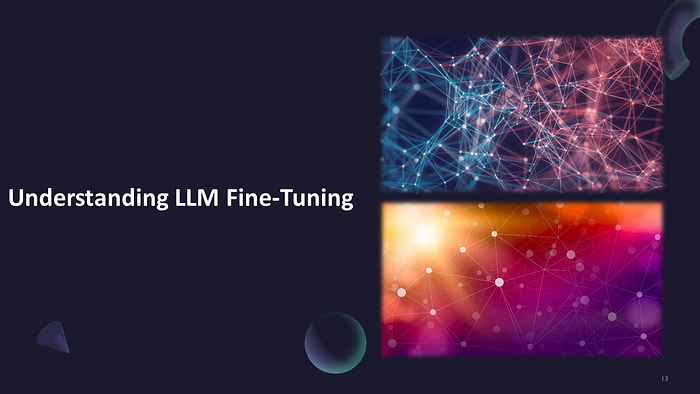A Practical Approach to Fine-Tuning: A Comprehensive Guide

Content
Introduction
figure out your task
collect data related to task’s input output
generation of data
fine tune small model
vary amount of data given to the model
evaluate your LLM
collect more data to improve
increase task complexity
Conclusion
Connect with me
Introduction
In the burgeoning world of artificial intelligence and machine learning, the concept of model fine-tuning holds paramount significance. As models become increasingly sophisticated, the need for fine-tuning them for specific tasks has become a necessity for achieving optimal performance. Fine-tuning involves adjusting a pre-trained model to make it more adept at handling a new, specific task, enhancing its efficiency and accuracy. This guide is crafted to be a beacon for individuals and professionals alike, illuminating the path to effective fine-tuning. It provides a structured and detailed approach, ensuring that your journey in fine-tuning a model is smooth, informed, and successful. Embark on this exploration and unlock the true potential of your machine learning models by mastering the art and science of fine-tuning.
Figure Out Your Task
- Understanding the Objective: Begin by understanding the objective of your task. Is it classification, regression, or something else? A clear objective will guide the subsequent steps.
- Analyze the Requirements: Analyze the computational and data requirements for your task. Ensure you have the necessary resources and infrastructure to support the fine-tuning process.
Collect Data Related to Task’s Input Output
- Identify Relevant Data Sources: Identify and gather data from relevant sources that align with your task’s input and output.
- Ensure Data Quality: Ensure the data is clean, labeled, and of high quality. High-quality data is crucial for effective model training and fine-tuning.
Generate Data If You Don’t Have It
- Use Data Augmentation Techniques: Employ data augmentation techniques to artificially enlarge your dataset. Techniques could include image rotation, text paraphrasing, etc.
- Leverage Synthetic Data Generation Tools: Utilize tools and frameworks that can generate synthetic data to complement your existing dataset.
Fine-Tune a Small Model
- Select an Appropriate Model Architecture: Choose a smaller model architecture that is suitable for your task.
- Monitor the Fine-Tuning Process: Keep a close eye on the fine-tuning process, ensuring the model is learning as expected. Make adjustments as necessary.
Vary the Amount of Data Given to the Model
- Experiment with Data Subsets: Use different subsets of your data to understand the model’s performance and data requirements.
- Analyze the Impact: Analyze how varying data amounts impact model performance. Use these insights for further fine-tuning.
Evaluate Your Large Language Model (LLM)
- Use Relevant Evaluation Metrics: Employ metrics that are relevant to your task to assess model performance.
- Conduct Periodic Evaluations: Carry out periodic evaluations to ensure the model is on the right learning trajectory.
Collect More Data to Improve
- Identify Data Gaps: If the model performance is lacking, identify gaps in your dataset and work to fill them.
- Enhance Dataset Diversity: Ensure your dataset is diverse and representative to improve the model’s learning and performance.
Increase Task Complexity
- Gradually Enhance Task Difficulty: As your model improves, gradually enhance the complexity of the tasks it performs.
- Ensure Model Adaptability: Ensure your model is adaptable and can handle increased complexity without a compromise in performance.
Conclusion
Fine-tuning is a meticulous and iterative endeavor. Adhering to these enriched steps will steer you towards effectively fine-tuning your models, culminating in robust and high-performing machine learning applications. Patience, continuous evaluation, and timely adjustments are your allies in this journey, ensuring your model is a paragon of performance and efficiency. Embark on the fine-tuning expedition with confidence and precision, and witness the evolution of your model into a powerhouse of capabilities.
Connect With Me
I am passionate about the advancements in machine learning, natural language processing, and the transformative power of Large Language Models and the Transformer architecture. My endeavor in writing this blog is not just to share knowledge, but also to connect with like-minded individuals, professionals, and organizations.
Open for Opportunities
I am actively seeking opportunities to contribute to projects, collaborations, and job roles that align with my skills and interests in the field of machine learning and natural language processing. If you are looking for a dedicated, inquisitive, and collaborative team member, feel free to reach out.
Let’s Collaborate
If you are working on exciting projects, research, or any initiatives and are in need of a collaborator or contributor, I am more than willing to lend my expertise and insights. Let’s work together to drive innovation and make a meaningful impact in the world of technology.
Contact Information
LinkedIn: Ankush Mulkar | LinkedIn
Email: ankushmulkar@gmail.com
GitHub: Ankush Mulkar portfolio
